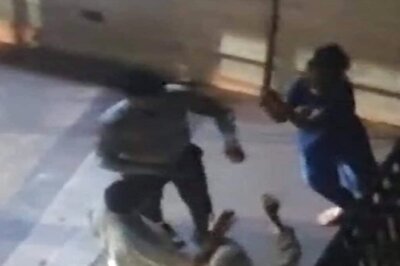
views
New Delhi: The Central Bureau of Investigation submitted its 12-page status report in the sensational Kotkhai rape and murder case in Shimla to the Himachal Pradesh government on Wednesday, in which it claimed to have zeroed in on the suspect by tracing his lineage through DNA fingerprinting.
According to CBI sources, they reached the suspect Anil Kumar after a team of 40 sifted through scientific evidence for nine months. They said that they first tested the samples at the crime scene to arrive at the age group of the suspect. This helped in zeroing in on the family and then they traced Kumar by tracking his calls.
The agency has also given a clean chit to the six suspects arrested by the Himachal Pradesh police during its investigation. The case was transferred to the CBI last year in July last year after the local police botched up the investigation.
On July 4 last year, a 16-year-old school-going girl had gone missing while returning from her school in Shimla. Two days later, her brutalised body was found from Halaila forests of Kotkhai. The case had led to massive protests in the state.
Anil Kumar, the main accused, was arrested by CBI on April 13. He was interrogated for 12 days in Delhi and was taken to the scene of crime as well, which was recreated by sleuths. He has been sent to judicial custody till May 7. The court has asked the CBI to file an affidavit in the court by May 8.
Scientific evidence led to the main accused
CBI sources said that after they took over the case, they started the probe afresh. They spoke to close to 2,000 persons, including the locals, school authorities and history sheeters from nearby areas. Statements of 400 persons were recorded.
This helped it narrow the list of suspects and blood samples of 250 people were collected, including the victim’s family members and school staff. All were sent for forensic examination to see if it matched with blood samples found on a liquor bottle found at the crime scene and the blood and semen samples collected from the clothes of the victim.
But it bore no fruit. But the agency ascertained that the suspect was an adult in the age group of 25-45 years. The CBI’s Forensic Science Laboratory then went for ‘percentage match’ and ‘lineage match’. This helps to focus on the samples that show significant similarities with the ones found at the crime scene.
Through this technique, the CBI found that the crime scene samples showed maximum similarities with the samples collected from a family in Kangra. To be sure, the CBI then did further sampling for parental and maternal lineage. “This led us to the man we were looking for,” a CBI officer said. During the investigation, it was found that Anil had a criminal background.
Who is Anil and the motive behind gruesome crime?
Anil used to work as a woodcutter at Dhar Kalua, eight kilometres away from where the crime took place. Anil had been involved in criminal activities in the past and had come out of jail in September 2016 on bail, but was absconding since then.
According to the investigators, he was not in touch with anyone in his family. At the time of arrest, he was working at a farm in Rohru, said sources in the CBI. He had joined just eight days before his arrest.
Sources said the girl was alone while returning from school when Anil saw her. It was a forest area where he raped and smothered her to death, they said. The motive is still not clear and whether more persons were present with Anil is still a matter of investigation.
Arrest of Anil
As Anil was not in touch with any of the family members, the task became difficult for the investigators. They zeroed in on around 80 people they thought Anil would contact. Teams of agents in civilian clothes were deployed outside a few houses so that they could arrest Anil if he ever returned.
Anil made calls on certain identified numbers in August 2017, February 2018, March 2018 and April 2018. But the calls were from different numbers. According to sources, he was clever and made calls from borrowed phones and he never used to reveal his whereabouts.
Investigators tracked the numbers from which Anil made the calls. They mapped the movement of calls made by place. They questioned persons who lent their mobile phones to Anil to make calls. On the basis of questioning, a rough sketch was made.
In April, he made a call from Rohru. A team was rushed there. They reached the location, a farm. The team questioned everyone. One of the workers matched their impression of the accused, said sources. He was arrested and brought to Delhi for interrogation.
CBI changes the theory of local police
For the suspects arrested by the local police, the CBI conducted a digital footprint match. Digital footprint is a technique to find out the location of persons through their mobile phone. It was found that none of the persons arrested by the local police had visited the scene of crime on the day the girl was raped and murdered.
The blood samples recovered from the scene of crime also didn't match the DNA of the suspects arrested. The investigators also conducted four polygraph and narco tests but the result were negative.
They corroborated the alibis given by these suspects and it was found to be true. All these led to the conclusion that the local police arrested the wrong people.
















Comments
0 comment